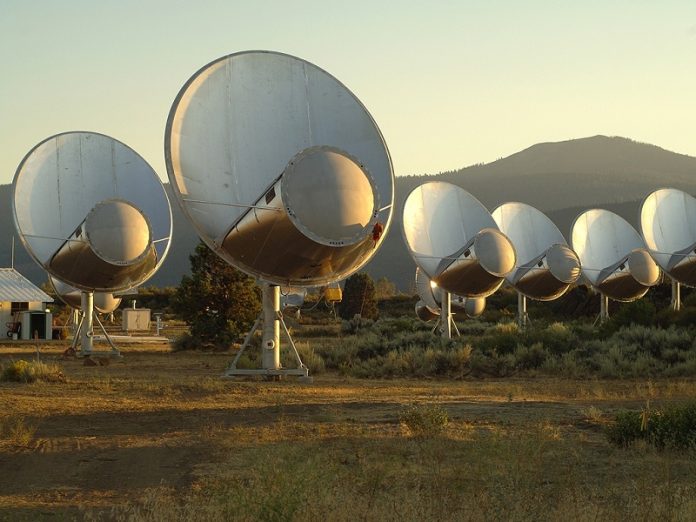
Let’s dive into one of those cosmic curiosities that’s bound to blow your mind: how we might chat with aliens.
And no, I’m not talking about elaborate coded messages or flashy signals. We’re talking about something incredibly fundamental—21cm radiation.
If you’re planning on having a conversation across the vastness of space, using light waves (electromagnetic radiation) is pretty much your go-to option.
It’s fast, reliable, and, well, it’s the most practical way to shout out to other civilizations in the universe. But why specifically 21 centimeters? That’s where things get juicy.
This 21cm radiation isn’t just some random frequency we picked out of a hat. It’s tied to something very essential, known as the hydrogen spin flip.
Hydrogen atoms consist of one proton and one electron, and these tiny particles have a property called “spin.” Think of spin like a little arrow pointing up or down.
Every so often, in the vast reaches of space, a hydrogen atom’s electron can flip its spin, going from a state where its spin is aligned with the proton to one pointing in the opposite direction.
This flip releases energy in the form of radiation at—you guessed it—a wavelength of 21 centimeters.
So, why does this matter?
Well, any smart civilization, whether they have blue skin, tentacles, or something more bizarre, will eventually discover hydrogen, understand spin, dabble in quantum mechanics, and figure out this whole 21cm radiation thing.
They’ll call it something different (they won’t have “21” or “cm”) but the concept remains universal. It’s like the cosmic Rosetta Stone.
What makes 21cm radiation perfect for long-distance interstellar chats is its ability to cut through interstellar dust. Space is filthy, with dust clouds that block out other forms of light.
However, 21cm waves are like the VIPs of the universe, slipping through the velvet ropes of cosmic debris to carry their message far and wide.
Here’s a fun fact: NASA’s Pioneer spacecraft, launched in the early 1970’s, carry plaques. On these plaques there’s a handy diagram of the hydrogen spin flip transition.
All other measurements on the plaque, including the height of humans, are made in reference to this fundamental distance. So the hope is that aliens can recognize the hydrogen spin-flip transition and use that to unlock the rest of our message.
Now imagine this scenario: One day, astronomers on Earth detect an unusual surge of 21cm radiation. It’s not coming from a random hydrogen cloud; it’s directional, purposeful. That could very well be an alien civilization sending us a “What’s up?” across the cosmos – 21cm radiation makes for a great calling card.
Using 21cm radiation to communicate with extraterrestrial beings leverages a basic, universal constant. And who knows? Maybe one day, when we finally hear that signal, we’ll know that somewhere out there, another intelligent species figured out the same galactic hack we did.
So keep your eyes—or rather, your telescopes—peeled. The next big discovery could be just a spin flip away!
Written by Paul M. Sutter/Universe Today.



